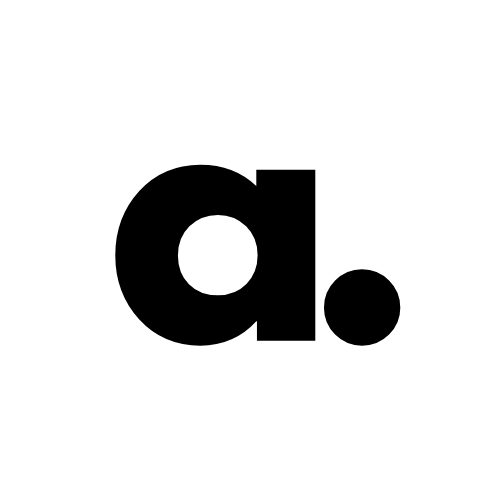How to Optimize Ad Scheduling for Maximum ROI
Ad scheduling can make or break your marketing campaign's success. This article delves into the strategies for optimizing ad schedules to achieve maximum return on investment. Drawing from expert insights, it covers key topics such as targeting decision windows, focusing on peak hours, and leveraging time-based bid adjustments to enhance your advertising effectiveness.
- Target Decision Windows for Higher Conversions
- Focus on Peak Hours to Boost ROI
- Daypart Ads to Match Customer Behavior
- Optimize Bids Based on Customer Activity
- Adjust Schedules to Maximize Engagement
- Leverage Time-Based Bid Adjustments
Target Decision Windows for Higher Conversions
Ad scheduling isn't just about when your audience is online; it's about when they're in the right mindset to convert. When an education client was seeing consistent ad engagement but poor conversion rates, we implemented what we call 'Decision Window Targeting', identifying not just high-traffic periods but high-intent micromoments.
We often explain to our clients that timing isn't just about presence; it's about alignment with mental states. For this client, our analysis revealed that while overall site traffic peaked during weekday afternoons, actual enrollment completions were 3x higher during Sunday evenings and early weekday mornings. By shifting 60% of their budget to these specific windows and adjusting messaging to address the 'planning mindset' prevalent during these times, their cost-per-enrollment dropped by 40+% while maintaining the same overall budget.
The game-changer was correlating conversion data with search query patterns, revealing that terms with words like 'compare,' 'decide,' and 'enroll' spiked during these periods while informational queries dominated during work hours. Most advertisers schedule based on traffic volume, but we've consistently found that aligning with decision windows, even during lower-traffic periods, dramatically improves ROI. The most effective scheduling strategy isn't about maximizing impressions but about maximizing presence during the specific hours when your audience is psychologically ready to convert.

Focus on Peak Hours to Boost ROI
One tactic that has consistently boosted our ROI is analyzing hourly and daily performance data, then scheduling ads to run only during the highest-converting windows. For one client, we discovered most conversions were happening between 8 a.m. and 2 p.m. on weekdays, while evenings and weekends were draining budget with little return.
We adjusted the ad schedule to focus spending during those peak hours and reduced bids or paused campaigns during low-performing times. That shift alone increased the conversion rate by 24 percent and cut wasted spend by nearly 30 percent within the first month.
The key is not just running ads nonstop, but aligning them with when your audience is most likely to act. Timing adds efficiency without needing a bigger budget.

Daypart Ads to Match Customer Behavior
Ad scheduling is a great tool for optimizing the timing of sponsored search advertisements and increasing ROI. One useful strategy I've employed is dayparting, which involves setting up ads to run at specific times of day or days of the week when the target demographic is most likely to convert.
For example, for an e-commerce customer selling fitness equipment, we discovered through past Google Ads data that conversions were much higher in the late evenings and on weekends--particularly on Sunday evenings, when individuals were planning for the coming week. On the flip side, we discovered that weekdays during working hours were less profitable, with fewer engagements and greater cost-per-click.
To account for this, we modified the ad schedule to run advertising more aggressively in the late evening and on weekends, while lowering bids or halting ads during less productive hours. This allowed us to focus the budget on the highest-converting hours, resulting in more targeted and efficient spending. As a result, conversion rates increased by 25% while costs per conversion decreased by 15%.
We were able to improve overall campaign effectiveness without increasing the budget by using ad scheduling to time our ads when users were most engaged and ready to convert.

Optimize Bids Based on Customer Activity
At Evenskyn, where our focus is on advanced beauty devices, the competition in PPC is intense. One strategy we've adopted to improve our ROI is "Ad Scheduling based on Customer Behavior Analysis." We analyzed when our target demographic was most active and receptive. For instance, we noticed a spike in engagement on weekends during late mornings. Adjusting our PPC campaigns to bid aggressively during these specific hours while reducing bids during low-engagement times helped us maximize visibility when it mattered most. This targeted approach ensured our ads reached potential customers at their peak interest, leading to higher click-through rates and conversions, thereby significantly enhancing our PPC ROI. It's all about understanding when your audience is most receptive and optimizing your ad spend accordingly.
Adjust Schedules to Maximize Engagement
At Write Right, we use ad scheduling to ensure our paid search ads appear when our audience is most active. One effective tactic we implemented was analyzing our Google Ads data to identify peak engagement times.
We noticed that most high-intent inquiries came between 10 AM and 6 PM on weekdays, with a drop-off in conversions late at night. So, we adjusted our ad schedule to increase bids during peak hours and reduce spending during low-conversion periods.
This simple tweak led to a 36% improvement in conversion rates while reducing wasted ad spend. The key takeaway is that running ads 24/7 isn't always efficient--focusing on the right timing ensures your budget works smarter, not harder.
Leverage Time-Based Bid Adjustments
Ad scheduling, also known as dayparting, is a powerful tool in the realm of digital advertising, allowing marketers to display their ads at optimal times when their audience is most likely to be online and engaged. For example, if analytics show that your target audience primarily searches for your type of products on weekday evenings, you can schedule your ads to only appear during those peak hours. This targeted approach not only conserves your budget by avoiding less productive times but also increases the chances of reaching potential customers when they're most receptive.
One effective tactic within ad scheduling is to adjust your bids based on the performance of ads during specific time slots. Suppose your data indicates that conversion rates spike on weekends from 10 AM to 4 PM. In that case, you can increase your bid adjustments to capitalize on this high-traffic and potentially higher-converting period. Conversely, lowering bids during slow hours could help reduce wasted spend. Over time, these strategic adjustments can significantly enhance the efficiency of your advertising budget, offering a better return on investment. Always remember, refining your ad scheduling strategy is a dynamic process that should evolve as you gather more performance data and insights about your audience's habits.




